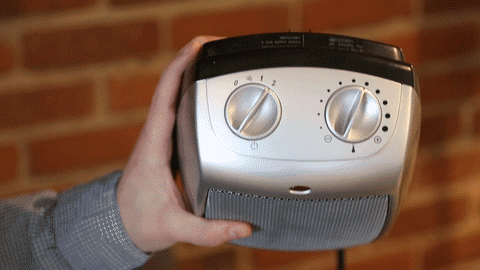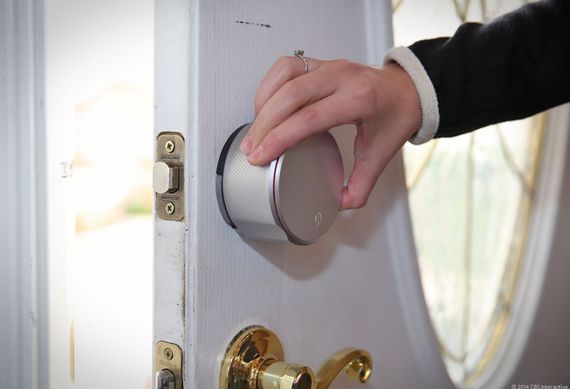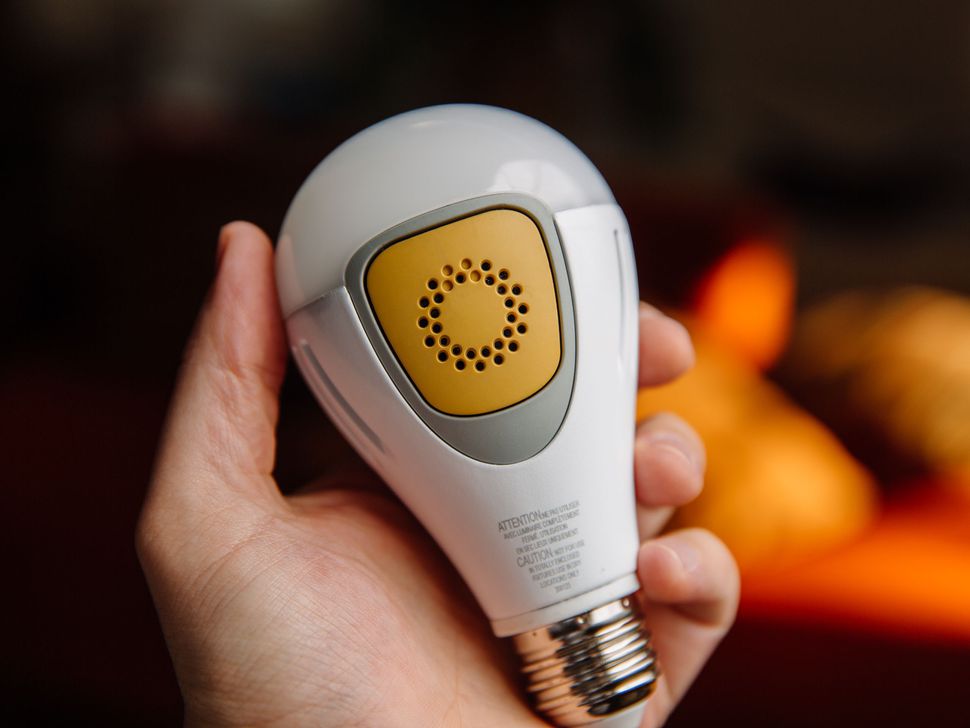Autoplay: OFF
There’s a lot that’s tempting about smart-home tech, but if you don’t actually own a home, you might feel like your hands are tied. After all, the last thing you want is to swap out a light switch or a thermostat only to end up violating your lease agreement or otherwise angering your landlord.
Fortunately, renters still have plenty of ways to take advantage of smart home tech — you just have to know what gadgets to get. That’s where we come in at the CNET Smart Apartment, where we test out all sorts of rental-friendly connected home gizmos to figure out the best ways of smartening up an otherwise dumb apartment. Here’s a rundown of what we’ve learned.

If you’re going to use a smart switch to operate something like a heater, make sure you pick one with physical controls that’ll work the way you want as soon as you plug it in.
Chris Monroe/CNET
Plug-and-play all the way
If you’re renting, then there’s a good chance that you can’t swap out things like door locks, light switches and thermostats. That’s OK, though, because there are still all sorts of ways to smarten up your living space.
The obvious starting point is go with gadgets that you can use right out of the box, no installation necessary. Plenty of well-reviewed tech falls under this category, including the Amazon Echo and Google Home smart speakers, Wi-Fi cameras like the Nest Cam, and smart switches from names like iDevices and Belkin WeMo that can automate your lamps and appliances.
The August Smart Lock works with your existing deadbolt, making it a good pick for renters who can’t replace their lock.
Colin West McDonald/CNET
Using one of those smart switches to automate something like an air conditioner or a space heater can be a great compromise if your landlord won’t let you upgrade to a smart thermostat. Just be sure to look for devices with physical controls on them that you can leave at the settings of your choice. When a smart switch turns off and on, it’s basically the same thing as unplugging your appliance and plugging it back in. You want something that’ll fire right back up to the setting you want, no extra input necessary.
And mind you, these kinds of plug-and-play solutions don’t need to have plugs. If you want to smarten up your door lock but can’t swap the deadbolt out, you can go with something that sits over top of the existing deadbolt, like the August Smart Lock or the Kwikset Convert. And connected LEDs from names like Lifx, and Philips Hue offer easy, rental-friendly screw-in smarts, especially if swapping out your light switches isn’t an option.


DIY security kits like Simplisafe don’t require contracts or professional installation — just stick the sensors up yourself and monitor everything on your phone.
Tyler Lizenby/CNET
DIY security is worth consideration
Those were the days.
Ry Crist/CNET
Story time! When I was in college, I rented a house with five buddies (including my CNET colleague, Andrew Gebhart). Crime was high in our part of town, and sure enough, we were broken into on more than one occasion. To make matters worse, our piece-of-work landlord refused to foot the bill for a security system, telling us instead to do a better job of locking up at night (the intruder had forced a tiny bathroom window open in the middle of the night to squeeze in and rob us blind while we slept). Suffice to say, it was a pretty hopeless situation for six broke college students locked into a lease and living on ramen noodles.
If only it’d been a couple of years later. These days, you’ll find countless DIY security options that Geb and I didn’t have access to back then. These include plug-and-play monitoring devices like Piper NV and Canary, along with affordable DIY systems like iSmartAlarm and Simplisafe. Most of them don’t require you to sign a lengthy contract or hardwire your home — and that makes them a great option for renters.
In fact, I’d go as far as to say that, from a renter’s perspective, the rise of the DIY security category has been one of the most significant smart-home developments yet. With a wide range of flexible, affordable new products and systems to choose from, people who used to be priced completely out of the category finally have some decent options.
Just keep in mind that, while there are exceptions, most of these systems don’t offer any form of professional monitoring. If something goes bump in the night, you’ll get a notification on your phone, but from there, it’s up to you to call the police.
Renters can also use smart-home tech to get creative with home security. For instance, you could build your own fee-free security system using a platform like SmartThings or Wink. Just purchase the necessary hub and a couple of compatible sensors for things like motion or door and window openings. Add in a siren and maybe some smart lights, and you’ll be all set.
BeOn LEDs will turn on automatically when they hear your doorbell or alarm, and they’ll stay on during power outages, too, thanks to the built-in batteries.
Tyler Lizenby/CNET
Look for lights that do more


Nanoleaf Aurora’s color-changing LED panels are flat-out geektastic.
Tyler Lizenby/CNET
Speaking of smart lights, you’ll want to be sure and shop around, because it’s quickly becoming one of the most diverse categories in the entire connected home. Aside from entry level lights that you can automate to turn on and off automatically, you’ll find bulbs with built-in motion sensors, bulbs that double as Bluetooth speakers, and even bulbs that turn on automatically when they hear your doorbell or alarm.
Some of the coolest smart lighting products aren’t even bulbs at all. Consider Nanoleaf Aurora, a set of triangular, color-changing LED panels that you can stick to your wall. They’re one of my favorite design-centric smart-home products — and there’s no reason you couldn’t put them up in an apartment. Plus, you can control them using both Alexa and Siri voice commands.
One last thing: if voice control is your top priority, if you’ve already bought an Amazon Echo or a Google Home, or if you’re just curious about how Apple HomeKit can bring Siri into play, then you’ll want to make sure that any smart lights you buy work with your preferred virtual assistant. And, wouldn’t you know it, our handy smart-home compatibility tracker is here to help.
CNET Smart Home: We transformed a real house into a test lab for the hottest category in tech.
Smart Home Matrix: Want to know what will work best with your smart home? Start here.





